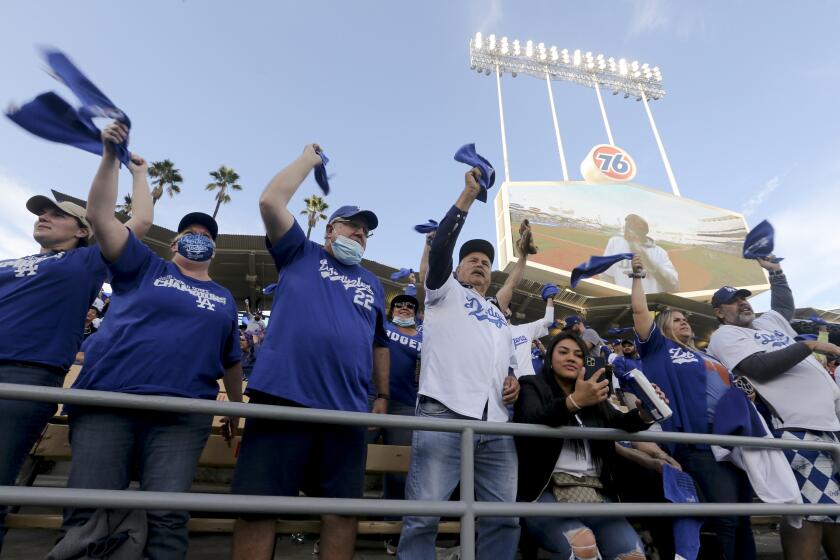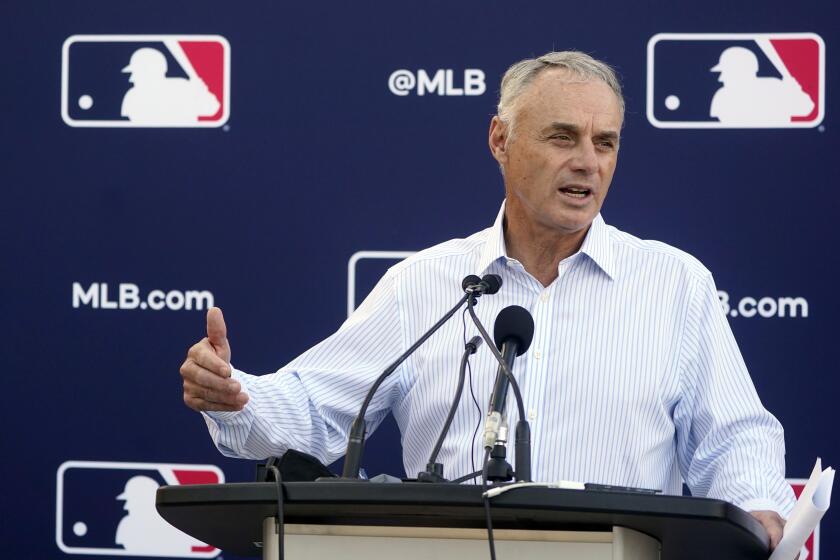How the MLB lockout is affecting the Dodgers’ offseason plans
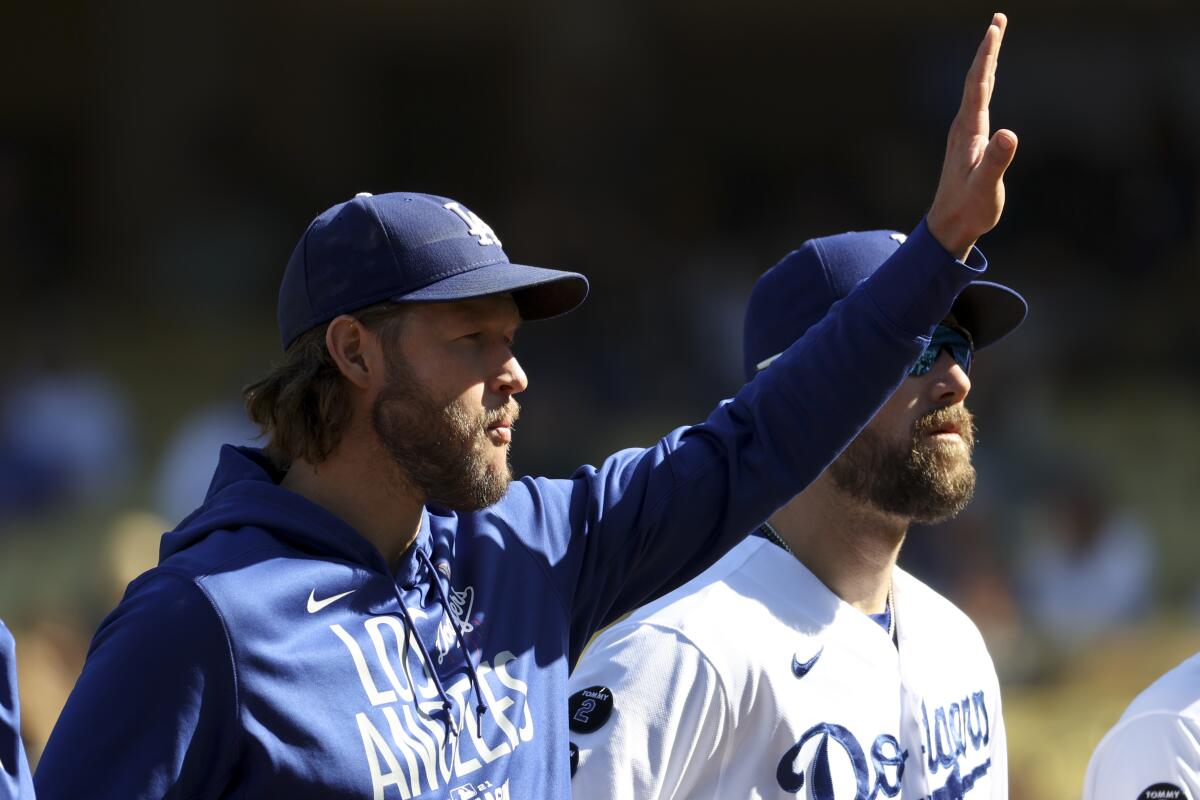
- Share via
There won’t be baseball in Chavez Ravine on March 31 after all.
Despite nine straight days of negotiations between Major League Baseball owners and the players union, Commissioner Rob Manfred announced the cancellation of the first week of the season, with the sides still unable to agree on a new collective bargaining agreement.
It’s the biggest disruption yet to the 2022 season, which already had been affected by the halt of offseason activity, the loss of early weeks of spring training and the cancellation of part of the exhibition schedule.
Now the regular season is under siege too, with the first two series of the schedule wiped out — the Dodgers were supposed to have a seven-game homestand against the Colorado Rockies and Arizona Diamondbacks starting March 31 — and animosity between the sides continues to persist amid the sport’s longest work stoppage in a quarter-century.
For the Dodgers, it means planning for the season remains on hold, leaving some of their biggest offseason questions up in the air.
As the lockout drags on, here are five ways it is impacting the team.
Thanks to stubborn owners, the MLB lockout will see fans lose seats, ushers and concessionaires lose livelihoods, and TV viewers lose a companion.
As the lockout drags on, here are five ways it is impacting the team.
Free-agency freeze
Before the lockout, the Dodgers didn’t make many major offseason splashes. While they added Andrew Heaney for depth in their pitching rotation, re-signed utility man Chris Taylor and avoided arbitration with slugger Cody Bellinger, they largely stood pat during a frantic finish to the pre-lockout free-agency market.
The expectation was that the team would pursue bigger names once the activity resumed. When that will be, however, remains unclear.
Among stars who remain unsigned, the top target for the Dodgers could be first baseman Freddie Freeman.
While the Southern California native has spent his entire career with the Atlanta Braves, he didn’t agree to a new contract with the defending World Series champions before the start of the lockout, with reports indicating a gulf exists between him and the club on a long-term deal.
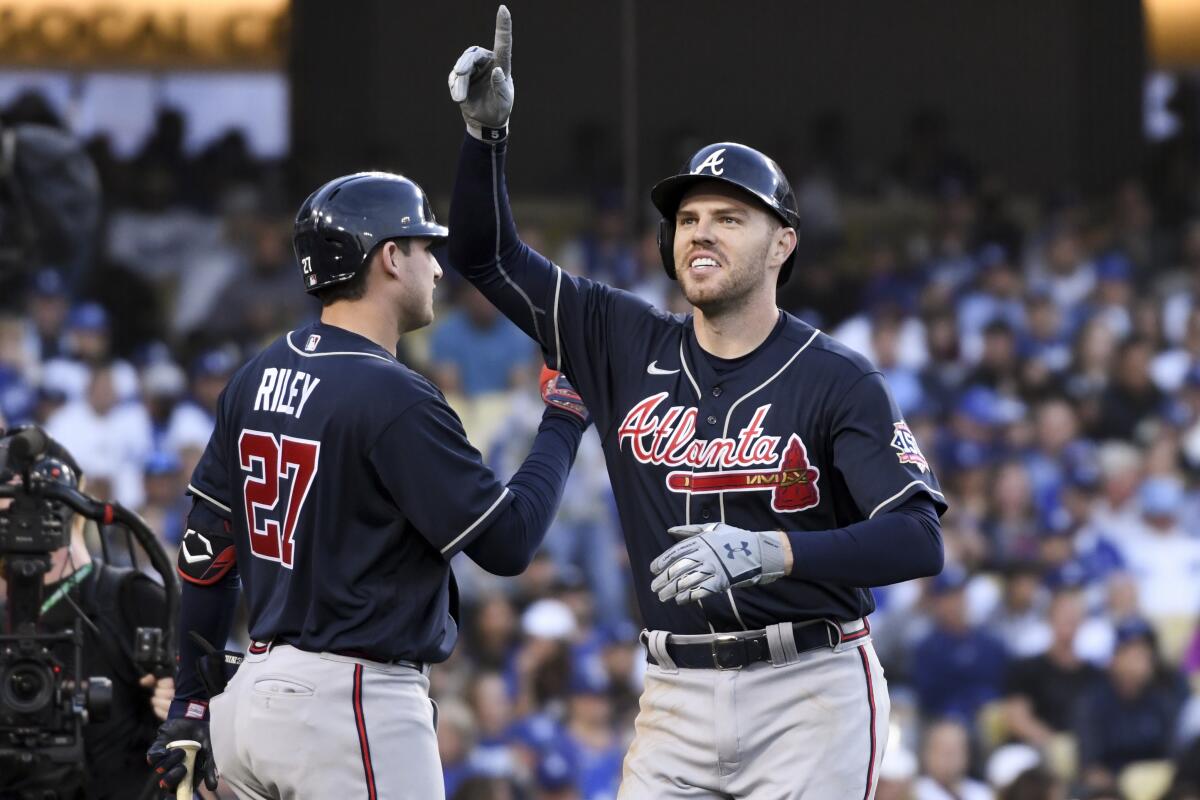
If the Braves fail to retain the 32-year-old, the Dodgers seem to be a logical fit. He would give them a left-handed power bat, to help compensate for the loss of Corey Seager, and an All-Star first baseman, especially with Max Muncy coming back from a torn elbow ligament. He also would add depth to a lineup that will have to adapt to the addition of the designated hitter to the National League.
Freeman isn’t the only star who could be an option for the Dodgers. Prior to the lockout, the team reportedly was linked to former Houston Astros shortstop Carlos Correa and Japanese outfielder Seiya Suzuki. They might be in the market for more pitching too.
But the longer the lockout lasts, the less time will be left for roster building, and the process could become more frantic.
Kershaw, Jansen and Kelly in limbo
Aside from adding new players, the Dodgers still have several free agents of their own whose futures remain up in the air.
Clayton Kershaw is the biggest unknown. While the 14-year veteran has spent the entirety of his career in Dodger blue, and a return to the team likely represents his best chance at competing for another championship, there’s still the possibility he signs elsewhere — notably, staying home in Texas to play for the Rangers.
In the bullpen, Kenley Jansen and Joe Kelly also are on the market. Jansen has been the team’s closer for the past decade and Kelly recently expressed a desire to stay in L.A., but like other free agents, they remain in limbo, forced to wait for the lockout to end before figuring out where they will be playing next season.
Pitching questions
The Dodgers have questions about their pitching staff. As it stands, Walker Buehler and Julio Urías are set to lead the rotation (Urías is arbitration-eligible, another task that will need to be sorted out once the lockout is lifted) with Heaney and Tony Gonsolin slotting into two of the rotation spots. Beyond that, the options become less clear.
Kershaw’s return would provide a boost. There is also veteran David Price, who started 11 times last year. The club has a collection of prospects potentially nearing big-league roles too, as well as Dustin May, who is expected to return from Tommy John surgery around the middle of the season.
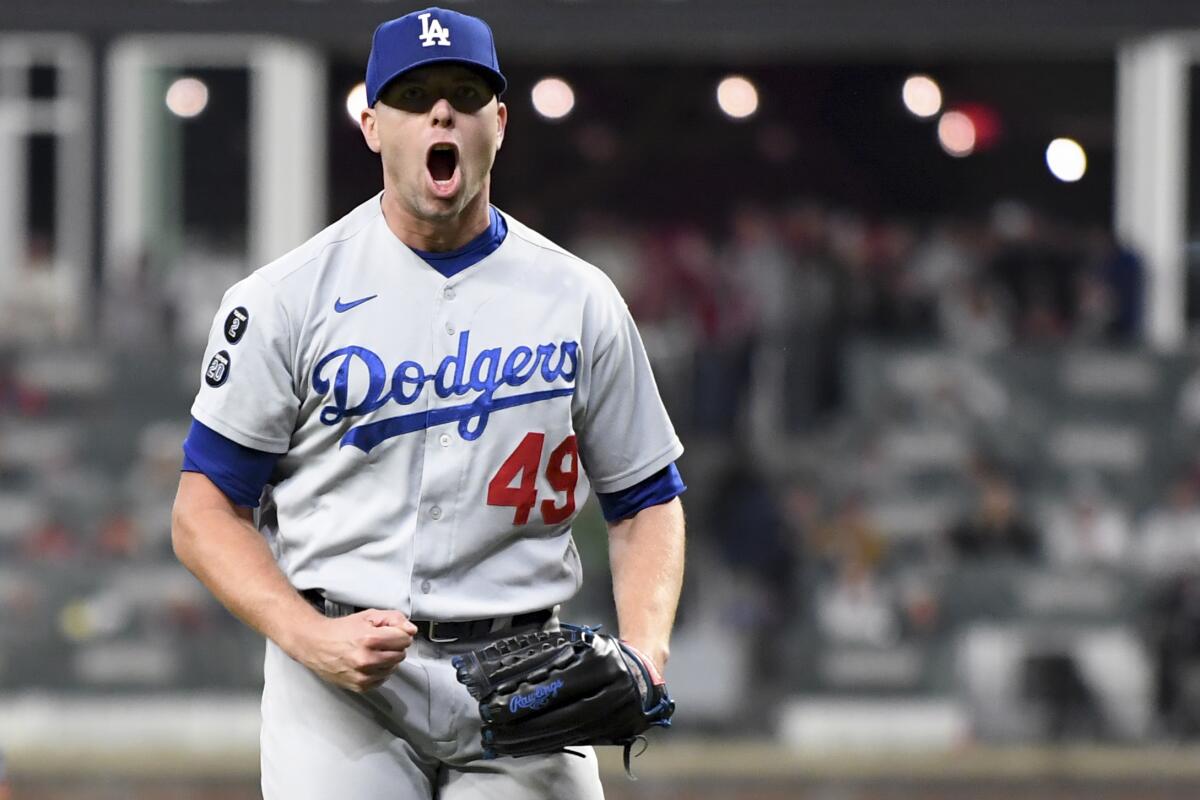
In the bullpen, Blake Treinen and a host of younger arms including Alex Vesia, Brusdar Graterol and Phil Bickford all return, while Daniel Hudson was signed prior to the lockout. They could be asked to take on increased roles if Jansen and Kelly aren’t retained.
Once the lockout ends, there could be options for the Dodgers to make additions in both free agency (where such veterans as Carlos Rodón and Zack Greinke remain unsigned) and the trade market (where both the Cincinnati Reds and Oakland Athletics reportedly have shown a willingness to move talented starters Luis Castillo, Chris Bassitt and Frankie Montas.
But for a Dodgers team that stretched its pitching staff thin during the playoffs last year and could benefit from bolstering the group before the start of this season, all it can do is wait.
Communication divide
Ever since the lockout went into effect at the start of December, the Dodgers have been barred from communicating with their players on the 40-man roster.
Those restrictions have cost them the chance to work with Heaney and Hudson for a full offseason and spring training, time that could have been spent helping foster improvement in the veterans — similar to how the Dodgers helped Treinen rediscover his top form two years ago.
The team also has been unable to work with its injured players, including May, Muncy and pitcher Caleb Ferguson, who had Tommy John surgery at the end of the 2020 season.
The communication divide could cause other unforeseen issues too, with the team unable to take full stock of its roster until players can convene for the preseason.
MLB Commissioner Rob Manfred had a lot to say about his decision to cancel the first week of the season. There a lot’s more we wish he would have said.
Even in a normal offseason, a team’s outlook can change significantly between the start of spring training and opening day. This year, those uncertainties might only grow, especially for a Dodgers team that will be navigating turnover at key spots on the roster.
Bauer situation
One big development that happened during the lockout: The Los Angeles County district attorney’s office decided not to charge Trevor Bauer with any criminal offenses stemming from sexual assault allegations against him.
The next question facing Bauer is whether he will be suspended by MLB, a decision that is on hold until the lockout is over. Bauer could appeal any suspension, although the MLB domestic violence and sexual assault policy does not stay any suspension until an appeal is heard. The league also could let the Dodgers decide on any discipline.
The Dodgers have said they are waiting for MLB to conclude its investigation before commenting. Once that process is complete, however, it likely will be up to the Dodgers to decide whether or not Bauer pitches for them again.
The Dodgers can release Bauer, though they would have to pay off the remainder of a contract that owes him $32 million this season and another $32 million in 2023. They also could attempt to terminate his deal without paying him — the standard player contract allows a team to do so should the player “fail, refuse or neglect to conform his personal conduct to the standards of good citizenship and good sportsmanship” — though that could trigger a grievance from the pitcher.
Whatever the case, the lockout seems like one of the last hold-ups preventing the situation from being resolved.
More to Read
Are you a true-blue fan?
Get our Dodgers Dugout newsletter for insights, news and much more.
You may occasionally receive promotional content from the Los Angeles Times.

